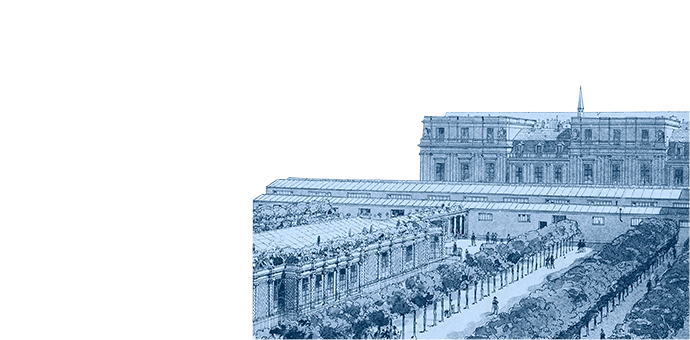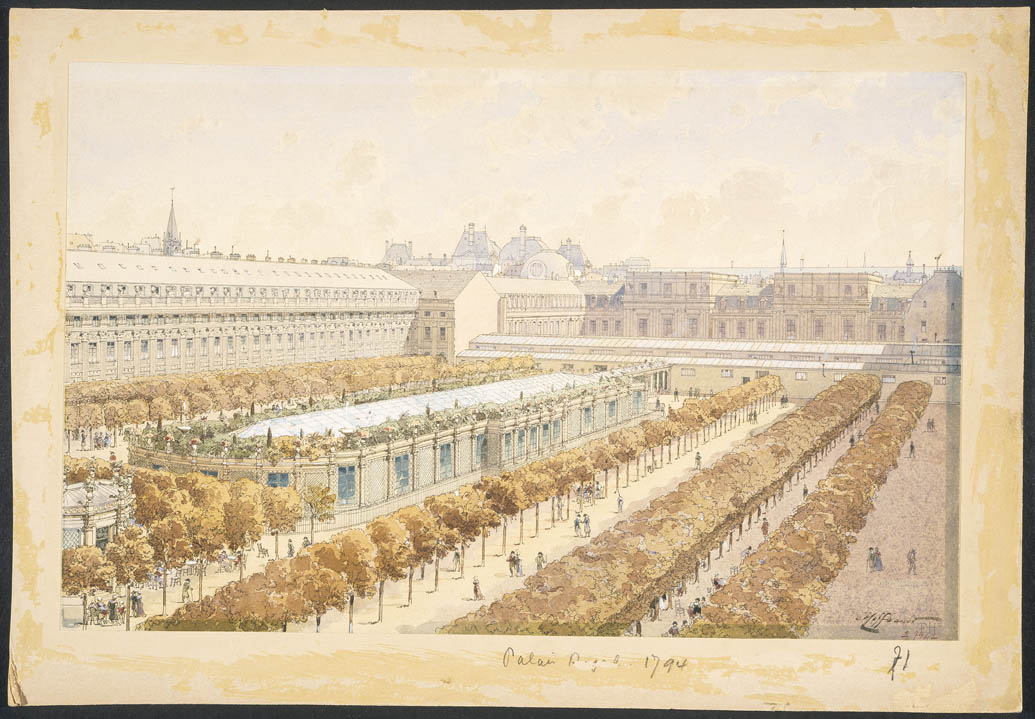The Palais-Royal and its neighborhood
It was called “Royal” and yet, it was one of the birthplaces of the French Revolution in Paris. Owned by the Duke of Orléans, the king’s cousin, the Palais-Royal was one of the few unrestricted places under the monarchy. Since the police were not allowed to enter the premises here, a person could take walks, gamble, attend performances, drink in cafés, buy the latest fashions, frequent prostitutes, as well as speak their mind freely. It was here, on July 12, 1789, that the journalist Camille Desmoulins and other “patriots” launched the insurrection that would lead to the storming of the Bastille two days later. After the fall of the monarchy on August 10, 1792, the Palais-Royal was renamed the “Equality Palace” and its gardens became the “Gardens of the Revolution”: from that point on, it was a public place. Under the Directory (1795-1799), its restaurants and shops attracted the new bourgeoisie. In 1814, it was returned to the Duke of Orléans, the future Louis-Philippe I, and became a political prize once again. It was invaded during the Revolution of 1848, and almost burned to the ground during the Commune of 1871.

 Chronology
Chronology
-
July 12, 1789
Camille Desmoulins calls on Parisians to rebel; tree leaves from the Palais-Royal become the first cockades -
June 30, 1789
The soldiers who refused to fire into the crowd are freed from prison, then protected by patriots within the Palais-Royal -
May 4, 1791
An effigy of Pope Pius VI, who had just officially condemned the Civil Constitution of the Clergy, is burned in the Palais-Royal -
August 10, 1792
After the fall of the royal family, the Palais-Royal first becomes the “Equality Palace” followed by the “Equality House” -
January 20, 1793
Assassination of the deputy Louis-Michel Lepeletier de Saint-Fargeau at the Café Février for having voted for the king’s death -
July 13, 1793
It is here where Charlotte Corday bought the knife that she used to kill the deputy and journalist Marat that same day -
November 6, 1793
After the execution of Philippe Egalité (nickname of the Duke of Orléans), the Equality Palace becomes national property -
December 15, 1798
Located in its gardens, the Palais-Royal’s arena is burned downed -
December 13, 1799
The Palais-Royal hosts the Tribunat, the legislative body of the Consulate





